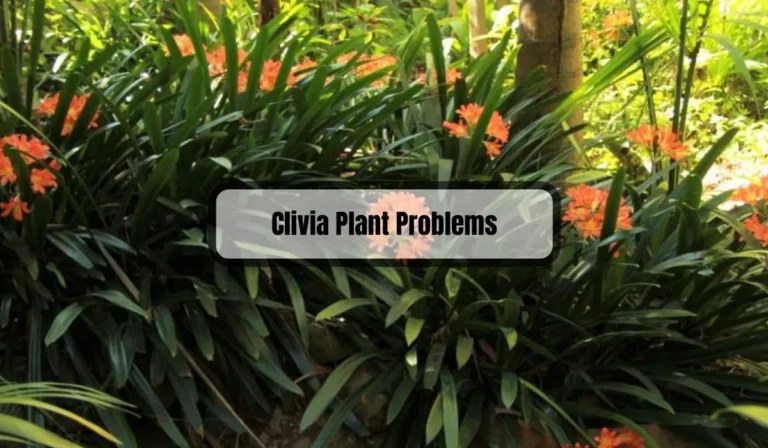Gerbera Daisy Problems: Common Issues and Solutions
Are you tired of seeing your Gerbera daisies wilt and wither away despite your best efforts to keep them healthy? These vibrant and colorful flowers are a popular choice for any garden, but they can be susceptible to a range of issues that can hinder their growth and beauty.
From poor drainage to powdery mildew, it’s important to know how to prevent and treat these common problems to ensure your Gerbera daisies thrive.
In this article, we’ll explore the most common issues that can affect your Gerbera daisies and provide you with expert tips on how to keep them healthy and vibrant for years to come.
Key Takeaways
- Gerbera daisies can experience problems due to poor drainage, powdery mildew, and nutrient deficiencies.
- Prevention is key to keeping your Gerbera daisies healthy, including providing proper drainage and regular fertilization.
- Treatment options for common Gerbera daisy problems include removing affected leaves and using fungicides or other treatments as needed.
Gerbera Daisy Problems
Gerbera daisies are a popular and beautiful addition to any garden or indoor space. However, like any plant, they can experience problems that can affect their growth and overall health.
In this section, we will explore some of the most common gerbera daisy problems, including common diseases, pest issues, and environmental stressors.
Common Diseases
Gerbera daisies are susceptible to a variety of diseases that can affect their growth and appearance. Some of the most common diseases that affect gerbera daisies include:
- Powdery mildew: This fungal disease is characterized by a white, powdery substance that appears on the leaves and flowers of the plant. It is caused by high humidity and moderate temperatures and can be prevented by ensuring good air circulation around the plant.
- Root rot: Overwatering can cause the roots of gerbera daisies to rot, leading to stunted growth, wilting, and yellowing leaves. To prevent root rot, ensure that the soil is well-draining and that the plant is not overwatered.
- Bacterial leaf spot: This disease is characterized by dark spots on the leaves of the plant. It is caused by bacteria and can be prevented by avoiding overhead watering and ensuring good air circulation around the plant.
Pest Issues
Gerbera daisies can also be affected by a variety of pests that can damage the plant and affect its growth. Some of the most common pests that affect gerbera daisies include:
- Aphids: These small insects feed on the sap of the plant and can cause stunted growth, yellowing leaves, and distorted flowers. They can be controlled by spraying the plant with a solution of water and dish soap.
- Spider mites: These tiny pests can cause yellowing leaves, webbing, and stunted growth. They can be controlled by spraying the plant with a solution of water and neem oil.
- Thrips: These insects feed on the flowers of the plant and can cause them to become distorted and discolored. They can be controlled by spraying the plant with a solution of water and insecticidal soap.
Environmental Stressors
Gerbera daisies can also be affected by a variety of environmental stressors that can affect their growth and overall health. Some of the most common environmental stressors that affect gerbera daisies include:
- Poor drainage: Gerbera daisies require well-draining soil to prevent root rot and other diseases. Ensure that the soil is well-draining and that the plant is not overwatered.
- Low light: Gerbera daisies require bright, indirect light to thrive. If the plant is not getting enough light, it may become leggy and produce fewer flowers.
- High temperatures: Gerbera daisies prefer cool temperatures and can become stressed in hot weather. Ensure that the plant is not exposed to direct sunlight and that the soil is kept moist to prevent wilting.
Prevention and Treatment
As with any plant, prevention is the best way to avoid problems with Gerbera daisies. Here are some tips for preventing and treating common issues that may arise.
Disease Prevention
Preventing disease in Gerbera daisies starts with proper care and maintenance. Here are some tips:
- Use appropriate soil/potting mix: Gerbera daisies prefer average to rich soils with medium moisture conditions. The soils must drain freely; otherwise, your plant could quickly develop root or stem rot. Consider planting your daisies in containers or raised planting beds if the soil doesn’t have good drainage.
- Water properly: Overwatering can lead to root rot, while underwatering can cause the plant to wilt and die. Water your Gerbera daisies when the top inch of soil feels dry to the touch.
- Fertilize regularly: Gerbera daisies benefit from regular fertilization. Use a balanced fertilizer every two weeks during the growing season.
- Prune regularly: Regular pruning helps to promote healthy growth and prevent disease. Remove any dead or diseased leaves or flowers as soon as you notice them.
Pest Control
Gerbera daisies are susceptible to a variety of pests, including aphids, spider mites, and thrips. Here are some tips for controlling pests:
- Use natural remedies: Neem oil or garlic sprays can be effective for controlling pests. You can also use insecticidal soap or horticultural oil.
- Introduce beneficial insects: Ladybugs and lacewings are natural predators of many common garden pests. Introduce these insects to your garden to help control pests.
- Keep your garden clean: Regularly remove dead leaves and debris from your garden to discourage pests from taking up residence.
Environmental Adjustments
Gerbera daisies are sensitive to environmental changes, so it’s important to make adjustments as needed. Here are some tips:
- Adjust lighting: Gerbera daisies need bright, indirect light. If your plant isn’t getting enough light, move it to a brighter location.
- Adjust temperature: Gerbera daisies prefer temperatures between 60 and 75 degrees Fahrenheit. If the temperature is too hot or too cold, your plant may suffer.
- Adjust humidity: Gerbera daisies prefer moderate humidity levels. If the air is too dry, consider using a humidifier or misting your plant regularly.
By following these tips, you can prevent and treat common problems with Gerbera daisies. With proper care and attention, your Gerbera daisies will thrive and provide beautiful blooms for years to come.
Proper Gerbera Daisy Care
Gerbera daisies are beautiful and vibrant flowers that can add color to any garden or home. But to keep them healthy and blooming, you need to take good care of them. Here are some tips on how to properly care for your Gerbera daisies.
Watering Techniques
Gerbera daisies need regular watering to keep them healthy. However, overwatering can cause root rot and other problems. Here are some watering techniques to keep in mind:
- Water your Gerbera daisies once a week, or more frequently during hot and dry weather.
- Water the soil around the plant, not the leaves or flowers.
- Use a watering can or hose with a gentle spray to avoid damaging the plant.
- Allow the soil to dry out between watering to prevent overwatering.
Light Requirements
Gerbera daisies need plenty of light to grow and bloom. However, too much direct sunlight can cause the flowers to wilt and fade. Here are some light requirements to keep in mind:
- Place your Gerbera daisies in a location where they will receive at least six hours of sunlight per day.
- Avoid placing them in direct sunlight during the hottest part of the day.
- If you are growing Gerbera daisies indoors, place them near a window that receives plenty of sunlight.
Soil and Fertilizer Needs
Gerbera daisies need well-draining soil that is rich in nutrients. Here are some soil and fertilizer needs to keep in mind:
- Use a soil mix that is specifically designed for Gerbera daisies.
- Add compost or other organic matter to the soil to improve drainage and fertility.
- Fertilize your Gerbera daisies once a month with a balanced fertilizer.
- Avoid over-fertilizing, which can cause the plant to produce too much foliage and not enough flowers.
By following these watering, light, soil, and fertilizer techniques, you can keep your Gerbera daisies healthy and blooming all season long. Remember to keep an eye out for any signs of problems, such as wilting or yellowing leaves, and take action promptly to prevent further damage.
Frequently Asked Questions (FAQs)
How to keep gerbera daisies blooming?
To keep your gerbera daisies blooming, you need to ensure they get enough sunlight and water. Gerbera daisies require at least six hours of direct sunlight each day. They also need to be watered regularly, but be careful not to overwater them as it can lead to root rot. Deadheading spent blooms can also help promote new flower growth.
How to treat fungus on gerbera daisy?
Fungal diseases can be a common problem for gerbera daisies. To treat fungus on gerbera daisy, you can use a fungicide specifically designed for ornamental plants. Make sure to follow the instructions on the label carefully and apply the fungicide as directed. You can also remove any infected leaves or flowers to prevent the fungus from spreading.
Gerbera pests and diseases?
Gerbera daisies can be affected by a variety of pests and diseases. Common pests include aphids, spider mites, and whiteflies. Diseases such as powdery mildew and root rot can also be a problem. To prevent pests and diseases, make sure to keep your plants healthy by providing them with proper sunlight, water, and nutrients. Regularly inspect your plants for signs of pests or diseases and take action immediately if you notice any issues.
Gerbera daisy powdery mildew?
Powdery mildew is a fungal disease that can affect gerbera daisies. It appears as a white or gray powdery substance on the leaves and stems of the plant. To treat powdery mildew on gerbera daisy, you can use a fungicide or a homemade solution of water and baking soda. Make sure to remove any infected leaves or flowers and dispose of them properly.
Do gerbera daisies do better in pots or in the ground?
Gerbera daisies can do well both in pots and in the ground. If you live in an area with harsh winters, it may be better to plant them in pots so you can move them indoors during the colder months. In general, gerbera daisies prefer well-draining soil and can benefit from the added nutrients in potting soil. If planting in the ground, make sure to amend the soil with compost or other organic matter to improve drainage.
How do I get rid of aphids on gerbera daisies?
Aphids can be a common pest for gerbera daisies. To get rid of aphids on gerbera daisies, you can use a mild solution of dish soap and water to spray the affected areas. You can also introduce natural predators such as ladybugs or lacewings to your garden to help control aphid populations. If the infestation is severe, you may need to use a pesticide specifically designed for aphids.
Conclusion
Don’t let common problems and diseases ruin the beauty of your Gerbera daisies. With a little bit of care and attention, you can keep these vibrant flowers healthy and thriving in your garden or home.
From proper watering techniques to providing adequate support, there are many ways to prevent and treat issues like poor drainage, root rot, and powdery mildew.
So, take the necessary steps to keep your Gerbera daisies looking their best and enjoy their colorful blooms for years to come!
Related Posts:






